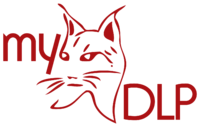Archive for October, 2010
Variety in DLP Filters
Nowadays, MyDLP is trying to adopt new predefined rule patterns to its filter collection. We are working on 3 new patterns.
- Canada SIN
- France INSEE
- UK NINO
Squid ICAP Configuration Example
The upcoming MyDLP SaaS will be working with your preferred ICAP enabled proxy server. So we are going to post ICAP configuration examples for widely used proxies, starting with Squid. Squid is an open source caching proxy which has a very large user base. It is open source and very stable.
Squid 3.0 and 3.1 have out of the box ICAP support with slightly different configuration parameters. Unfortunately, older versions have no built-in ICAP support but it is possible to enable it using patches.
For Squid 3.1 enter following lines into squid.conf file to enable request adaptation:
icap_enable on
icap_service service_req reqmod_precache bypass=0 icap://127.0.0.1:1344/dlp
adaptation_access service_req allow all
For Squid 3.0 enter following lines into squid.conf file to enable request adaptation:
icap_enable on
icap_service service_req reqmod_precache 0 icap://127.0.0.1:1344/dlp
icap_class class_req service_req
icap_access class_req allow all
There are more parameters for configuring ICAP which are explained here.
Presenting DLP in SaaS model
As you can see from our previous blog post, we are now developing multi-user version of MyDLP in order deliver product to customer in SaaS model. When working on this task, we have encountered several conceptual challenges.
For example; Network-based DLP solutions should inspect all relevant traffic in order to prevent sensitive data leakage, but in Security-as-a-Service model, applications run on cloud computing data centers. So, situation enforces administrators to redirect all traffic to cloud servers and this was never a good idea because of duplicate bandwidth usage on both client line and server line.
Now, what we should do? What is the solution?
Solution is already presented by several authors. Answer is hybrid SaaS model. An application server runs in the internal network, proxies whole external traffic and sends critical parts to services on clouds for leak prevention analysis.
We have worked on this concept and tried to think of a way to use MyDLP in this model and let me tell you MyDLP was already ready for this model and the answer what we were looking for was ICAP.
In next blog post, I will talk about ICAP and our SaaS model implementation…
MyDLP SaaS
Data leak protection is a common concern for all companies nowadays. However not all companies have enough budget to conduct an inbound DLP system. Nowadays, MyDLP developers are working to convert MyDLP to a SaaS.
